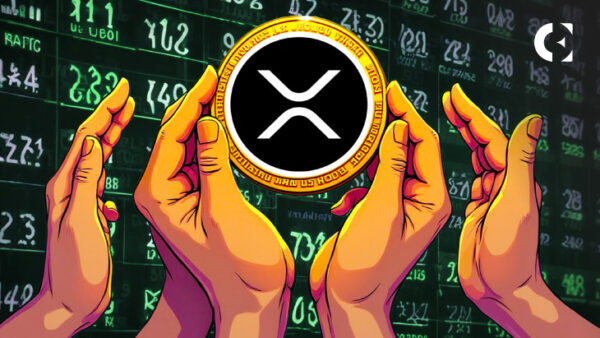- Reports state Ripple is targeting a $1 billion raise via a SPAC to seed a digital-asset treasury for XRP accumulation
- The structure is framed as a buy-and-hold treasury, not a credit line; key terms and timing remain under discussion
- XRP’s supply stack remains large and programmatic, with on-ledger escrows releasing monthly alongside Ripple’s treasury holdings
Ripple plans to raise $1 billion via a SPAC to seed an XRP digital-asset treasury that buys and holds the token under a defined mandate. The treasury would centralize capital and standardize purchases on a schedule the market can track.
Terms remain in discussion and no closing timetable is public. The structure signals accumulation rather than borrowing, a distinction that shapes float absorption, liquidity conditions, and expected flow into spot books.
How the reported XRP treasury would work
The plan described to investors is a special-purpose acquisition company (SPAC) that merges into, or funds, a digital-asset treasury (DAT). Proceeds are earmarked to buy and custody XRP.
Ripple is expected to contribute a portion of its existing XRP to align interests, while outside backers provide fresh capital. A treasury mandate suggests staged purchases, defined risk controls, and reporting cadence, closer to an institutional accumulation program than to a trading book.
Related: Ripple, DTCC, and the “Public Network” Debate: Why Has XRP Searches Spiked Today
Fit with Ripple’s institutional stack
The treasury concept arrives as Ripple pushes deeper into institutional settlement and treasury tooling. The company announced a planned GTreasury acquisition to embed fiat and tokenized-value operations into standard corporate workflows.
In parallel, market chatter links prime-broker and collateral rails that could intersect with Ripple’s stable-value initiatives (e.g., RLUSD) over time. None of this confirms a single clearing pipeline today; it does show how an XRP treasury could slot into enterprise flows when compliance and controls are in place.
Supply, escrows, and the case for a dedicated vehicle
Ripple lists roughly 4.7 billion XRP on hand, with another 35.9 billion XRP in monthly on-ledger escrows that release and are partially returned. A standalone treasury allows governed sourcing, disclosure discipline, and potential price-insensitive scheduling, tools that institutional allocators prefer.
For traders, the key is how and when purchases occur, what custody stack is used, and whether the program discloses windows or size bands that could influence liquidity.
Market backdrop and why timing matters
Crypto had just absorbed a sharp deleveraging and tighter dollar liquidity last week. In that environment, transparent accumulation often prices better than opportunistic taps.
A predictable buyer can reduce headline volatility around allocations, while unclear mechanics can invite front-running or fade trades. For XRP specifically, traders will watch spot–derivatives basis, exchange reserves, and top-of-book depth if treasury buying begins to print across venues.
Related: XRP Tries to Reclaim $2.50 as Ripple Broadens Payment Rails in Africa
Disclaimer: The information presented in this article is for informational and educational purposes only. The article does not constitute financial advice or advice of any kind. Coin Edition is not responsible for any losses incurred as a result of the utilization of content, products, or services mentioned. Readers are advised to exercise caution before taking any action related to the company.









